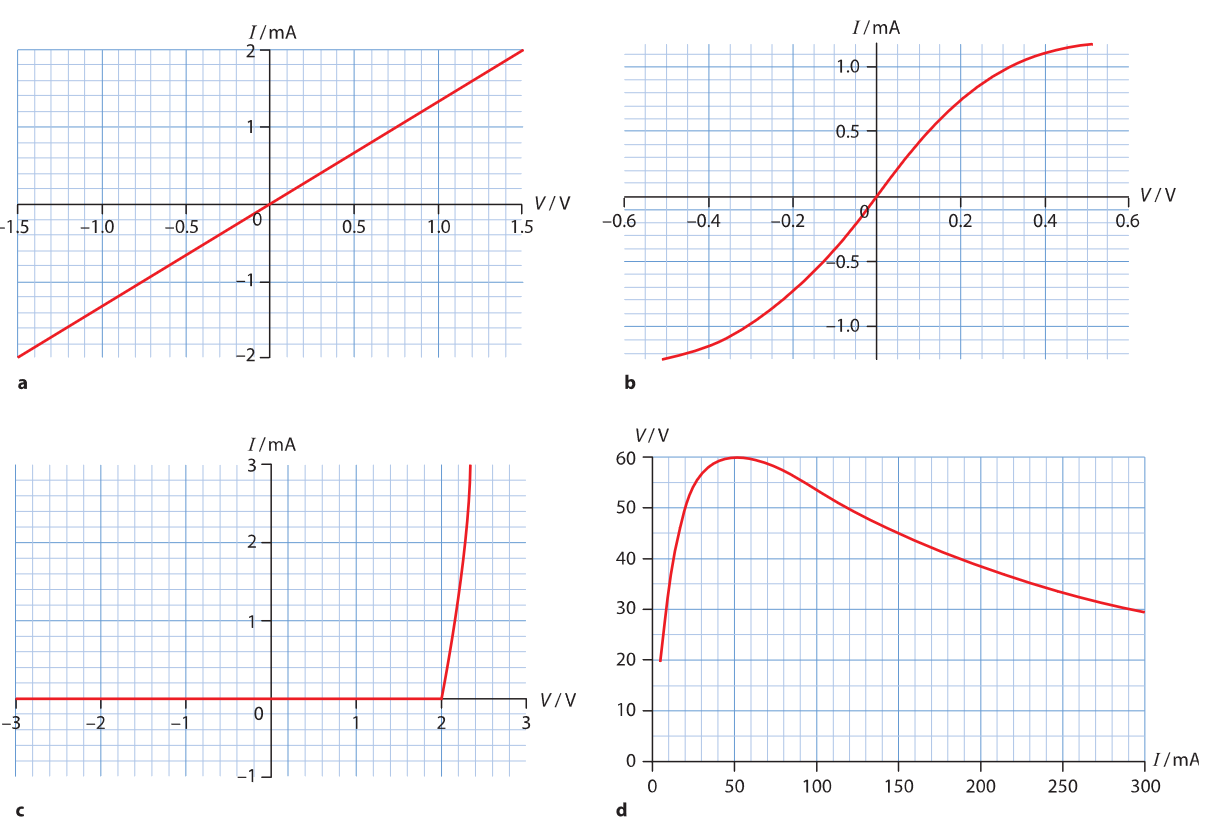Ohm’s law says that the current through a device is always directly proportional to the potential difference applied to the device.
An alternate statement is given as:
where is the material’s conductivity, is the current density, and is the electric field. Because of the relation of with the current and with the potential, this is an equivalent statement as the above.
Devices can obey or disobey the assertion — we say that a material obeys Ohm’s law when the resistivity of the material is independent of the magnitude and direction of the applied electric field.
The graphs below display the i-v characteristic for a) devices that obey Ohm’s law (Ohmic device), b) a lamp filament, c) a diode, and d) a thermistor.

See also
- Power, for an extension of Ohm’s law